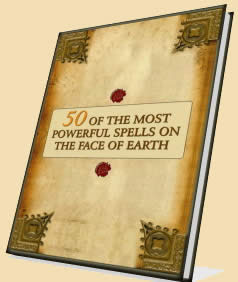"Kolossoi", were most often used to bind evil spirits rather than people (though binding people was certainly not unheard of.) Rough human forms were shaped from clay, lead or wood and then the figures would be bound, hands and feet often tied behind the back, heads turned sharply to the left or even completely around. Pins, nails and other objects would be inserted, the number 13 being a favourite to insert. These poppets would then be encased in a lead vessel and buried to bind the intended person/spirit.
Today binding spells are commonly used and targeted at specific individuals to stop or prevent then from harming others. The ancient Greeks however used binding to secure deity protection for public as well as private defence. For example, the spirit of Ares, the God of War would be bound in a poppet, which was then placed in the village square to ward off invading enemies, thus preventing war. Similarly other protective deities could be bound and the poppet buried near the home to protect buildings and family.
During the witch hysteria of the 17th century, at the infamous trial of the Lancashire Witches in 1612, Old Mother Demdike confessed and described the quickest way to murder someone by witchcraft as: _"...to make a Picture of clay, like unto the shape of the person whom they mean to kill, and dry it thoroughly: and when they would have them to be ill in any one place more than another; then take a Thorn or a Pin, and prick it in that part of the body to consume away, then take that part of the Picture, and burn it. And when they would have the whole body to consume away, then take the remnant of said Picture and burn it: and so thereupon by that means, the body shall die."_
In more recent histories, when African slaves were forced to leave their homes and sold into labour on American plantations, many brought with them small religious artefacts similar to a poppet doll called a "_fetish_". A fetish is commonly a statue or object containing magical power, used to protect the owner from evil spirits or to control the owner's destiny. In tribal Africa, these beliefs are incorporated into expressive figures that acquire their power through ritualistic carving and consecration. In addition, special herbs, sacrificial offerings and magical words are used to increase its power or appease its spirit.
Some fetishes are hollowed out to hold herbs and other magical substances, while others are adorned with special charms and talismans to ward off evil and protect the owners. However, fearing the power such beliefs had on the lives of their slaves, any slave found in possession of a fetish was likely to be killed by his owner, or at the very least have the skin removed from his back by whipping.
Finally, the late Sir James George Frazer (1854-1941) describes the use of sympathetic or imitative magic in his now classic book: The Golden Bough: a Study in Magic and Religion (first published in 1890):
"Perhaps the most familiar application of the principle that like produces like is the attempt which has been made by many peoples in many ages to injure or destroy an enemy by injuring or destroying an image of him, in the belief that, just as the image suffers, so does the man, and that when it perishes he must die. A few instances out of many may be given to prove at once the wide diffusion of the practice over the world and its remarkable persistence through the ages.
For thousands of years ago it was known to the sorcerers of ancient India, Babylon, and Egypt, as well as of Greece and Rome, and at this day it is still resorted to by cunning and malignant savages in Australia, Africa, and Scotland. Thus the North American Indians, we are told, believe that by drawing the figure of a person in sand, ashes, or clay, or by considering any object as his body, and then pricking it with a sharp stick or doing it any other injury, they inflict a corresponding injury on the person represented.
For example, when an Ojebway Indian desires to work evil on any one, he makes a little wooden image of his enemy and runs a needle into its head or heart, or he shoots an arrow into it, believing that wherever the needle pierces or the arrow strikes the image, his foe will the same instant be seized with a sharp pain in the corresponding part of his body; but if he intends to kill the person outright, he burns or buries the puppet, uttering certain magic words as he does so.
The Peruvian Indians molded images of fat mixed with grain to imitate the persons whom they disliked or feared, and then burned the effigy on the road where the intended victim was to pass. This they called "burning his soul.""
Written by George Knowles
Suggested reading (pdf e-books):
Francesca De Grandis - Goddess InitiationAleister Crowley - One Star In Sight
Anonymous - Pentagram Meaning And History
Tags: orleans voodoo power spirituality gender secrets voodoo free voodoo spell witchcraft modern spirituality gender acquiring servants roots voodoo liber free downloadable magick books tablet hermes multiple





